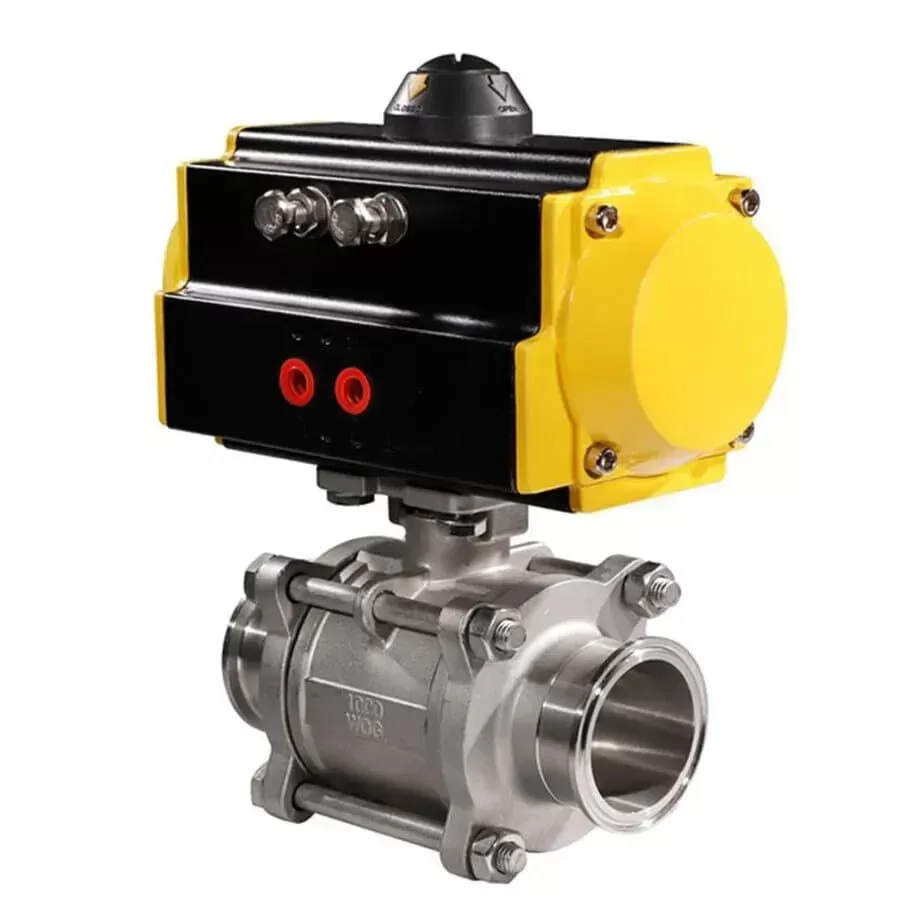Notifications

6 minutes, 30 seconds
-28 Views 0 Comments 0 Likes 0 Reviews

Introduction
We are a leading control valve manufacturer in China, delivering high-quality valves and control actuators customized to meet a wide range of industrial applications.
In industrial automation, selecting the right pneumatic actuator is critical to ensuring long-term reliability and optimal performance—especially in environments where corrosion is a constant threat. Pneumatic actuators play a central role in valve automation systems, delivering precise control across industries such as chemical processing, water treatment, marine engineering, and food production.
For corrosive environments, choosing the appropriate actuator goes beyond basic function. It requires careful consideration of material composition, actuator design, and compatibility with pressure, temperature, and chemical exposure. This guide outlines the best material options and actuator types for corrosion resistance, helping engineers make informed and application-specific decisions.
1. Stainless Steel: A Versatile Choice
304 Stainless Steel
Offers reliable mechanical strength and moderate corrosion resistance, making it ideal for mildly corrosive environments such as food and beverage processing, where hygiene and resistance to weak acids and alkalis are essential.
316L Stainless Steel
Enhanced with molybdenum for superior resistance to pitting and crevice corrosion. A preferred choice for demanding environments like chemical plants, coastal facilities, and marine vessels, where exposure to seawater and chlorides is common.
2. Specialty Alloys for Extreme Corrosive Conditions
Hastelloy
Exceptionally resistant to highly oxidizing and reducing chemicals, Hastelloy is ideal for industries dealing with aggressive acids and elevated temperatures, such as petrochemical and pharmaceutical sectors.
Monel
A nickel-copper alloy with excellent resistance to hydrofluoric acid, seawater, and brine. Perfect for marine and offshore applications where fluctuating chemical exposures and mechanical stress demand high durability.
3. Plastic Materials: Lightweight, Cost-Effective Options
Polypropylene (PP)
Suitable for light-duty environments involving dilute acids and alkalis. Commonly used in laboratory equipment and chemical dosing systems.
Polyvinyl Chloride (PVC)
Widely adopted in wastewater treatment applications, PVC provides good chemical resistance and ease of installation for low-pressure and low-temperature systems.
Selecting the correct actuator type is as important as choosing the right materials. Pneumatic actuators are available in various configurations tailored to motion requirements—linear, rotary, or gripping.
1. Linear Pneumatic Actuators
Convert compressed air into straight-line motion, ideal for gate and globe valve operations.
Single-Acting: Features a spring-return mechanism, suitable for fail-safe applications.
Double-Acting: Provides powered motion in both directions, offering better force control for high-cycle operations.
Common Uses:
Valve automation in wastewater systems
Cleanroom pneumatic systems
Material handling applications
2. Rotary Pneumatic Actuators
Translate air pressure into rotational motion for quarter-turn or multi-turn applications.
Rack-and-Pinion: Delivers high torque with precise angular control (90°, 180°, 270°).
Vane-Type: Compact design with smooth motion, ideal where space is limited.
Common Uses:
Butterfly and ball valve automation
Power plant flue gas control
Indexing systems in production lines
3. Pneumatic Grippers
Used in automation to grip, hold, and manipulate components.
Parallel Grippers: Move jaws in parallel, ideal for uniform shapes.
Angular Grippers: Offer pivot motion, useful in tight spaces.
Three-Point Grippers: Ensure stable gripping of irregular objects.
Common Uses:
Robotic arms in electronics and automotive industries
Cleanroom applications
Automated pick-and-place systems
1. Media Compatibility
Ensure all exposed materials are chemically compatible with process media. For example, chloride-rich acids require 316L or Hastelloy, while mild alkalis may suit plastic bodies like PP or PVC.
2. Temperature and Pressure Tolerance
High-pressure and high-temperature processes necessitate robust actuator construction and advanced materials like Monel or Hastelloy, often with double-acting actuation.
3. Environmental Exposure
Outdoor and offshore installations require resistance to atmospheric corrosion. Materials like 316L stainless steel and Monel are ideal in these scenarios.
4. Motion Requirements
Select actuator type based on required valve or equipment movement—linear for axial travel, rotary for turning motion, or grippers for object manipulation.
5. Maintenance Demands
Choose corrosion-resistant, low-maintenance actuators to reduce service intervals and increase uptime, particularly in hard-to-reach or hazardous areas.
6. Compliance and Certification
Regulated industries may require certifications such as FDA, ATEX, or ISO. Use compliant materials like PTFE, 316L stainless steel, or specialty plastics in these environments.
In harsh industrial environments, selecting pneumatic actuators that offer both mechanical performance and corrosion resistance is crucial to system longevity and efficiency. Whether facing saline marine air, aggressive chemicals, or high-humidity conditions, the right combination of actuator type and material ensures reliable operation.
Materials like 316L stainless steel, Hastelloy, and Monel offer high resistance for extreme environments, while plastics like PP and PVC serve well in light-duty, cost-sensitive applications. Coupled with appropriate actuator types—linear, rotary, or gripping—these material choices support effective, safe, and long-lasting automation.
By thoroughly understanding environmental factors and actuator design, engineers can confidently specify pneumatic actuators that meet operational needs while standing up to the harshest industrial conditions.Know more about Google SEO Directory

